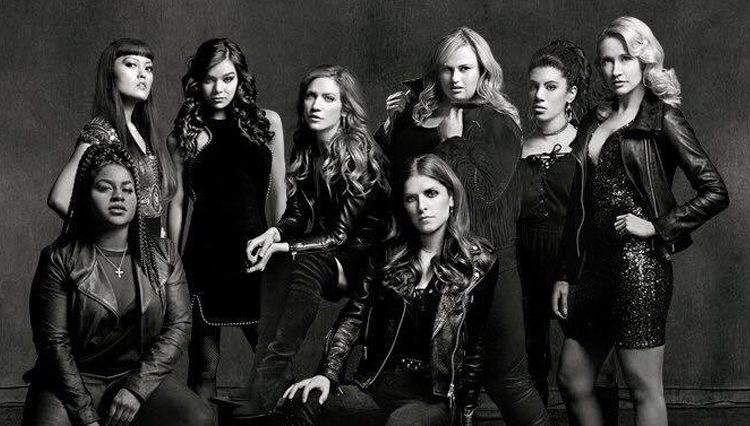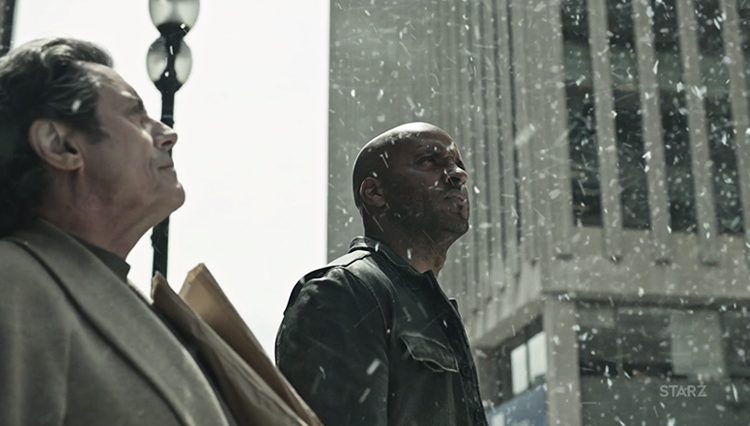
If you were looking for something to watch one early October Tuesday evening in 1973, you might have come across this movie of the week airing on ABC and given it a chance.
The telefilm cold opens with a slow, deliberate scene of the obviously meticulously planned murder of a sleeping old woman, a man cutting off her nightgown and using a portable ‘homemade murder machine’ to electrocute her, after which the murderer creepily eats a candy bar, evidently deriving pleasure from both acts. The movie then introduces police chief Dan Barnes, in bed with his girlfriend ‘Ma’ Tate, a motel owner. The two wake early so chief Dan can go to work, and so Tate can check in a mysterious guest into the motel at 5 am -both in the sleepy New England burg of Mount Angel.
Chief Dan responds to the old woman’s murder, only the local doctor declares she died in her sleep of a heart attack. These things do happen, she was 63. Soon, another man in his 60s is found dead in his bed, having died in the night shirtless. By the time the third 63-year-old drops dead from a ‘heart attack’ – this time Chief Dan’s still spry and lively officer, Jesse, dropping dead right at his desk – he begins to suspect the possibility of foul play, which is pretty much confirmed when Jesse’s dog George is also found killed.
From there it’s a race against time when Chief Dan’s eager assistant Blanche finds all the deceased were from the class of 1928-and soon there’s only one local class member left…
‘Isn’t It Shocking?’ aired Oct 2, 1973, at 8:30/7:30 pm central as ABC’s Tuesday Movie of the Week against Hawaii Five-O on CBS and the premiere of Bill Bixby’s The Magician on NBC. The movie was rerun several times throughout the 70s and even aired in TV syndication into the late 1990s.
This was an era where networks were cranking out one ‘movie of the week’ after another-and the network that perfected the format was ABC. Originally, the TV networks themselves were lukewarm on the concept of showing theatrical films on network television, as it was thought it would disrupt the status quo that had developed between TV networks, sponsors, and even the theatrical film industry. But in 1961, NBC began regularly airing theatrical films on the weekend as the NBC Saturday Night at the Movies, and other networks soon followed suit. Soon there were a number of the [insert day of the week here] ‘Night at the Movies’ filling timeslots which actually started to lead to a shortage of available theatrical films to air.
Faced with this shortage of content, TV networks warmed to the idea of making their own movies and started using the terminology ‘made for TV movie’ as an invitation for viewers to stay home on the weekend and watch what was promoted as the equivalent of a first-run theatrical film. NBC pioneered the made-for-TV movie and what is generally acknowledged to be the first two made-for-TV movies aired on NBC in 1964. But it was ABC that upped the game in 1969, taking a concept previously floated to all the networks and rejected, of creating a weekly original made-for-TV movie with a 90 minute instead of a 120-minute time slot that allowed for a smaller budget and faster production schedule. ABC called this new TV movie format ‘The Movie Of The Week’
(MotW) and the rest is history.
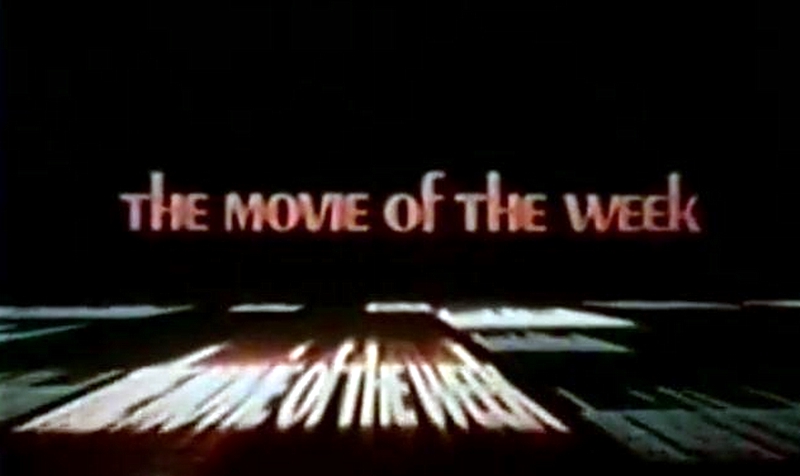
ABC initially cranked out 25 of these a season, airing on Tuesday nights at 8:30/7:30 pm Central time. Using an established popular series as a lead-in, allowed the final timeslot of 10/9:00 Central to have a one-hour program before the local news. The hope was that by 9 pm, viewers would be into the film and less likely to change channels to a competing station. In 1971, ABC added a second MotW on Saturday night and adjusted the titles of the shows to the Movie of the Week and Movie of the Weekend. Soon there were ‘movies of the week’ all over the place, at one point ABC produced 69 of these during the 1973-74 season, which brings us back to our film.
This is an example of a dated TV MotW you initially don’t think will be that interesting-but about 15-20 minutes into it, you’re hooked, which was the intent. Yes, by season five of ABC’s MotW, they had perfected the formula. Who is that creep holed up at the motel that is obviously going on a killing spree, and why? A big part of the film’s appeal was due to the cast.
The police chief lead was played by Alan Alda. By the time of this TV movie (TVM), M*A*S*H had started its second season and viewers were familiar with his character of Hawkeye Pierce, whom he would play throughout M*A*S*H‘s eleven seasons. Here he was a tired public servant being tempted by a job offer the next county over. I don’t get the feeling much ever went on in this town, so I’m not sure what he was tired of, apart from remembering his New England accent-which comes and goes here.
The all-too-helpful, pigtailed Blanche was Chief Dan’s secretary/assistant and likely police dispatcher, as much as the town needed one. She looked suspiciously like TV’s Mary Hartman. Because she was TV’s Mary Hartman-or would be, just over two years later, played by Louise Lasser. Blanche was clearly sweet on Chief Dan, feigning interest in his hobby of birdwatching throughout the film. The two had surprising chemistry and I get the feeling director Badham let them simply act off each other for the closing credit sequence, and the film closes with a big Alda ‘Hawkeye’ laugh.
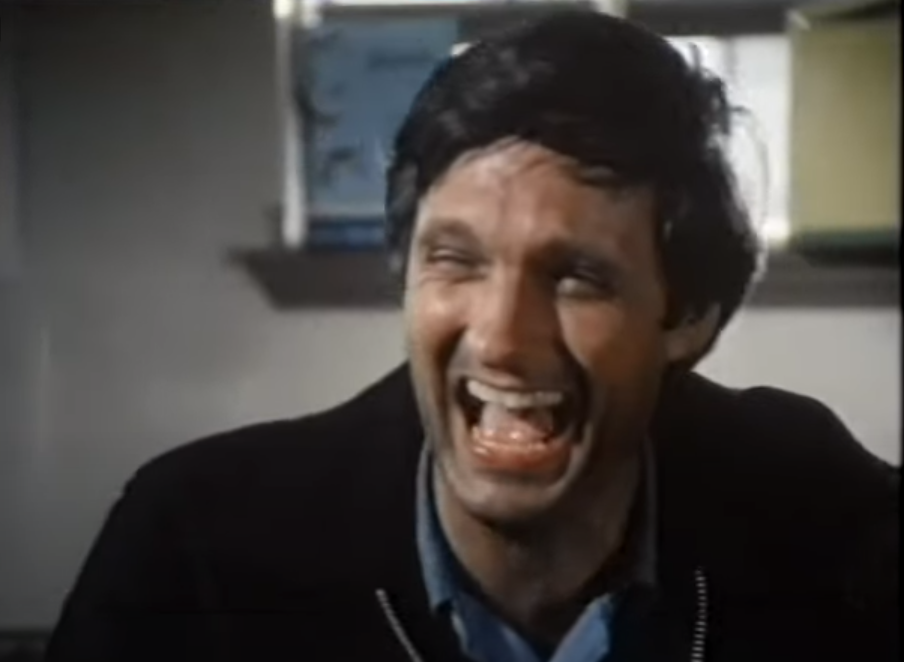
Dorothy Tristan was Doc Lovell, the local doctor; she acted for about fifteen years in supporting roles on TV and film. Will Geer, by then well-recognized from his role on The Waltons, played her father, retired, wheelchair-bound original Doc Lovell who served as the coroner. Liam Dunn was the genial old shop owner-incredibly, Dunn was only 56 at the time, but weak and thin from emphysema. He died only three years later. (Oddly, all the ’63-year-olds’ in the TVM looked to be in their late 70s.) Ruth Gordon was Marge Savage, the final intended victim of the murderer and local cat lady harboring a secret. Patricia Quinn was ‘Ma’ Tate, annoying girlfriend of Chief Dan, motel owner, and mother of a brood of kids. The killer himself, Justin Oates, was played by respected character actor Edmond O’Brien. This was one of the last few roles played by O’Brien before his retirement from acting at the end of a 35-year career. Before acting, he was a stage magician, reportedly tutored by Houdini himself. He would later work with Orson Welles and the Mercury Theater.
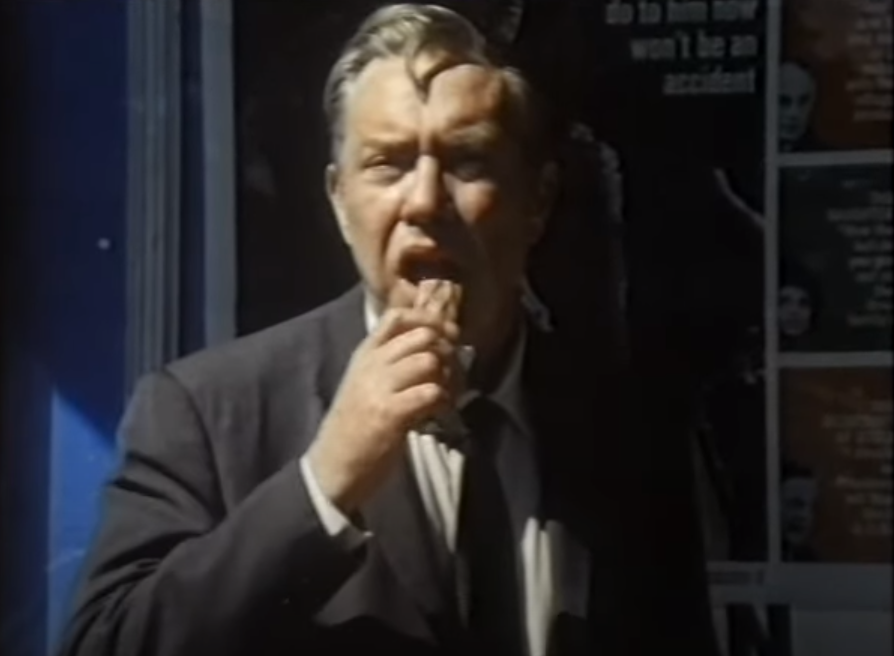
Isn’t It Shocking? was directed by John Badham. Badham started in the industry as a production assistant in 1969, then quickly was producing and directing episodes of The Bold Ones, The Sixth Sense, and Night Gallery-which brings us up to the time of this TV movie. He would later branch into a twenty-year career directing feature films such as Saturday Night Fever, Dracula, WarGames, Short Circuit, and others before coming back to television in the late 90s.
Writer Lane Slate delivered a brisk, efficient script-which you pretty much have to have in a 70-minute format sans commercial breaks. He wrote several TV movies in the 1970s, as well as the 1977 feature film The Car. He is credited with creating four short-lived TV series; 1978’s The American Girls, 1981’s Strike Force, 1985’s MacGruder and Loud, and 1989’s Island Son.
The movie was set in the small Massachusetts town of Mount Angel-which was in reality the small Pacific Northwest town of Mount Angel, Oregon, where the film was shot entirely on location, along with some scenes filmed in nearly Salem and Brownsville. About 100 locals were used for bit parts and as extras. A fair bit of the local countryside is seen as characters drive around; and several local buildings and homes were used in the production, even interior scenes.
Local establishments Angels Table Restaurant (redressed as the Horse Creek Diner) and White Corner Grocery store were both used, inside and out. White Corner Grocery had been around for 73 years at the time of filming, but the grocery has long since closed. An extended scene inside gives a great snapshot of a pre-barcode general store. The building is now a combined mercantile/bed & breakfast you can find on VRBO and Airbnb. The restaurant has also closed, with the last Google street view showing it empty and for sale. The local downtown movie theater was seen at the time, still showing theatrical films-in the movie showing the fictitious Paramount film ‘The Man,’ but now the aged building houses the Mt. Angel Performing Arts Center and has recently gotten a facelift with a large clock face on the front.
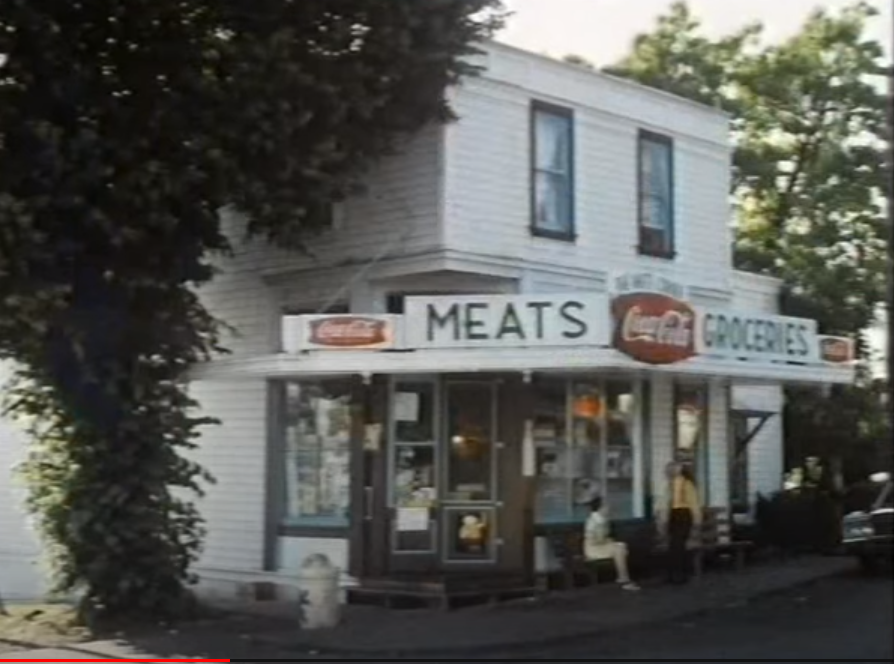
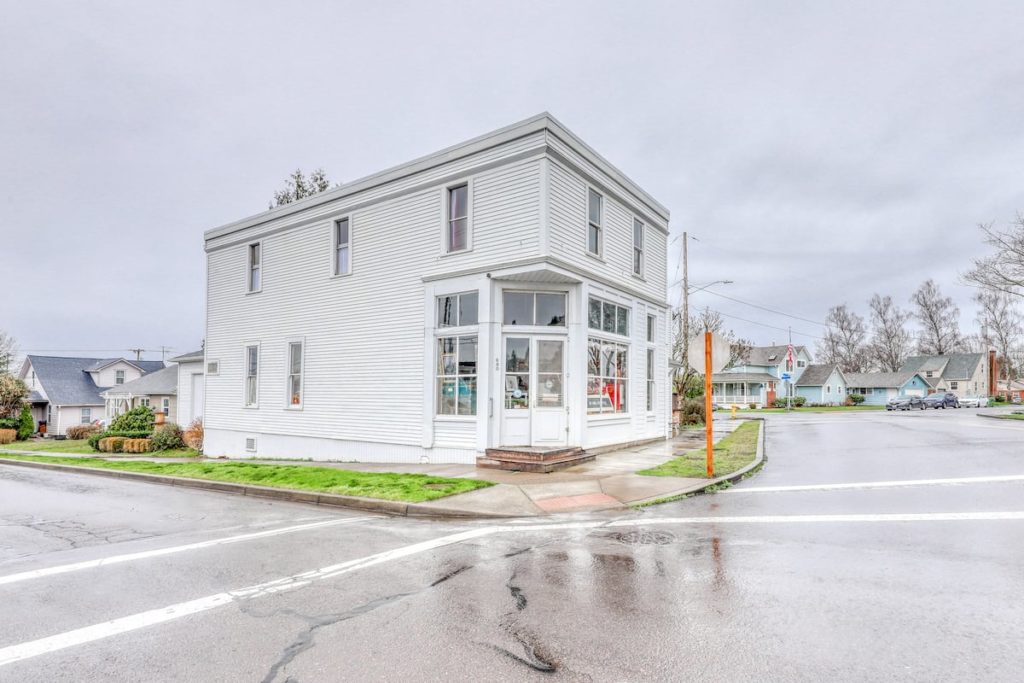
City Hall was also used, and the building was dressed with 2,000 feet of ivy for filming. Local resident Joe Bochsler had the honor of a scene being filmed in an upstairs bedroom of his home. The film’s only stunt sequence was shot in a wheat field in front of his home. Another resident, Alan Wiesner, also had his place used as a location. Wiesner and his wife would winter in Palm Springs and summer at their Mt. Angel farmhouse. It was likely Wiesner who turned producers onto Mt. Angel as a filming location, as he let his Hollywood connections know his home was available for filming. The Wiesners were paid $500 for the use of their property, but it was well-earned. The 1864 house represented where Ruth Gordon’s ‘cat lady’ character lived; and set decorators distressed the house exterior, ripped wallpaper, and littered the inside with old newspapers, garbage, and cats. Lots of cats.
“I always thought it was pretty fascinating,” Chance Wiesner was quoted as saying in a period news article. “Aunt Jeannine and my grandma, not so much – because the wallpaper, it wasn’t the same. I always thought it was really very interesting.”
Wiesner died in 1975 and the house remained in the family until 2011 when the property was parceled off for sale. Before that, the house itself was sadly looted by thieves which included the theft of the original fixtures and all the doors, even the stained glass front door of the home. The house was also purchased in 2011, and the new owner Nick Haas has moved it and is restoring it, using scenes from Isn’t It Shocking? as visual references.
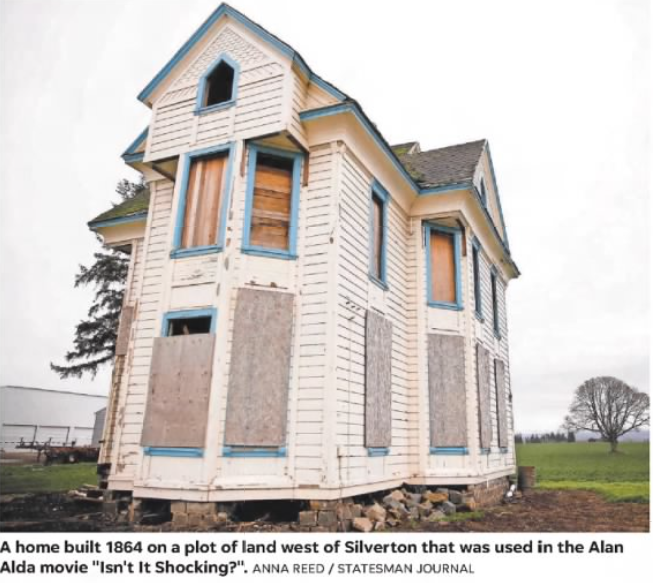
Combining elements of Hitchcock and Agatha Christie with enough of a light touch to not alienate early evening viewers, and somehow managing to sneak enough saucy dialogue in the final scene to make you rewind to make sure you heard it right – Isn’t It Shocking? was remembered for years by viewers that would write into newspaper columns asking about the film, which has never been officially released on home video or streaming. However, you can see a home recording courtesy of YouTube channel TVfanatic. If you’re at all interested in TV from this era, it’s worth the 70-minute watch.
Forgotten TV Movies is a column that will regularly consider made-for-TV movies of the 70s/80s of various genres. Oh, the places we’ll go and the sights we’ll see.


